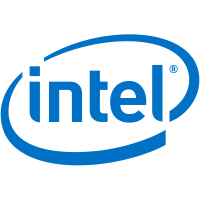NVIDIA Tesla M10 vs NVIDIA GeForce GT 120 OEM
Análisis comparativo de las tarjetas de video NVIDIA Tesla M10 y NVIDIA GeForce GT 120 OEM para todas las características conocidas en las siguientes categorías: Esenciales, Información técnica, Puertos y salidas de video, Compatibilidad, dimensiones y requerimientos, Soporte de API, Memoria. Análisis de desempeño comparativo de tarjetas de video: PassMark - G3D Mark, PassMark - G2D Mark, Geekbench - OpenCL, CompuBench 1.5 Desktop - Face Detection (mPixels/s), CompuBench 1.5 Desktop - Ocean Surface Simulation (Frames/s), CompuBench 1.5 Desktop - Video Composition (Frames/s), CompuBench 1.5 Desktop - Bitcoin Mining (mHash/s), GFXBench 4.0 - Car Chase Offscreen (Frames), GFXBench 4.0 - Manhattan (Frames), GFXBench 4.0 - T-Rex (Frames), GFXBench 4.0 - Car Chase Offscreen (Fps), GFXBench 4.0 - Manhattan (Fps), GFXBench 4.0 - T-Rex (Fps), CompuBench 1.5 Desktop - T-Rex (Frames/s).
Diferencias
Razones para considerar el NVIDIA Tesla M10
- La tarjeta de video es más nueva: Fue lanzada al mercado 7 año(s) 2 mes(es) después
- Velocidad de reloj del núcleo 40% más alta: 1033 MHz vs 738 MHz
- 38.3 veces más la tasa de llenado de textura: 4x 52.24 GTexel / s billion / sec vs 11.81 GTexel / s
- 80 veces más pipelines: 4x 640 vs 32
- 56.9 veces mejor desempeño de punto flotante 4x 1,672 gflops vs 117.5 gflops
- Un proceso de manufactura más nuevo permite la creación de una tarjeta de video más poderosa y con una temperatura más baja: 28 nm vs 55 nm
- 64 veces más el tamaño máximo de memoria: 4x 8 GB vs 512 MB
- 5.2 veces más velocidad de reloj de memoria: 5200 MHz vs 1008 MHz
- 18.3 veces mejor desempeño en PassMark - G3D Mark: 3046 vs 166
- 7.5 veces mejor desempeño en PassMark - G2D Mark: 385 vs 51
- Alrededor de 31% mejor desempeño en CompuBench 1.5 Desktop - Video Composition (Frames/s): 50.918 vs 38.948
- Alrededor de 91% mejor desempeño en GFXBench 4.0 - T-Rex (Frames): 3306 vs 1731
- Alrededor de 91% mejor desempeño en GFXBench 4.0 - T-Rex (Fps): 3306 vs 1731
| Especificaciones | |
| Fecha de lanzamiento | 18 May 2016 vs 10 March 2009 |
| Velocidad de reloj del núcleo | 1033 MHz vs 738 MHz |
| Tasa de llenado de textura | 4x 52.24 GTexel / s billion / sec vs 11.81 GTexel / s |
| Pipelines | 4x 640 vs 32 |
| Desempeño de punto flotante | 4x 1,672 gflops vs 117.5 gflops |
| Tecnología de proceso de manufactura | 28 nm vs 55 nm |
| Tamaño máximo de la memoria | 4x 8 GB vs 512 MB |
| Velocidad de reloj de memoria | 5200 MHz vs 1008 MHz |
| Referencias | |
| PassMark - G3D Mark | 3046 vs 166 |
| PassMark - G2D Mark | 385 vs 51 |
| CompuBench 1.5 Desktop - Video Composition (Frames/s) | 50.918 vs 38.948 |
| GFXBench 4.0 - Manhattan (Frames) | 3693 vs 3689 |
| GFXBench 4.0 - T-Rex (Frames) | 3306 vs 1731 |
| GFXBench 4.0 - Manhattan (Fps) | 3693 vs 3689 |
| GFXBench 4.0 - T-Rex (Fps) | 3306 vs 1731 |
Razones para considerar el NVIDIA GeForce GT 120 OEM
- 4.5 veces el consumo de energía típico más bajo: 50 Watt vs 225 Watt
- 3.9 veces mejor desempeño en CompuBench 1.5 Desktop - Face Detection (mPixels/s): 179.899 vs 46.191
- 2.2 veces mejor desempeño en CompuBench 1.5 Desktop - Ocean Surface Simulation (Frames/s): 1813.265 vs 814.192
- 4.2 veces mejor desempeño en CompuBench 1.5 Desktop - Bitcoin Mining (mHash/s): 757.451 vs 180.026
| Especificaciones | |
| Diseño energético térmico (TDP) | 50 Watt vs 225 Watt |
| Referencias | |
| CompuBench 1.5 Desktop - Face Detection (mPixels/s) | 179.899 vs 46.191 |
| CompuBench 1.5 Desktop - Ocean Surface Simulation (Frames/s) | 1813.265 vs 814.192 |
| CompuBench 1.5 Desktop - Bitcoin Mining (mHash/s) | 757.451 vs 180.026 |
Comparar referencias
GPU 1: NVIDIA Tesla M10
GPU 2: NVIDIA GeForce GT 120 OEM
| PassMark - G3D Mark |
|
|
||||
| PassMark - G2D Mark |
|
|
||||
| CompuBench 1.5 Desktop - Face Detection (mPixels/s) |
|
|
||||
| CompuBench 1.5 Desktop - Ocean Surface Simulation (Frames/s) |
|
|
||||
| CompuBench 1.5 Desktop - Video Composition (Frames/s) |
|
|
||||
| CompuBench 1.5 Desktop - Bitcoin Mining (mHash/s) |
|
|
||||
| GFXBench 4.0 - Manhattan (Frames) |
|
|
||||
| GFXBench 4.0 - T-Rex (Frames) |
|
|
||||
| GFXBench 4.0 - Manhattan (Fps) |
|
|
||||
| GFXBench 4.0 - T-Rex (Fps) |
|
|
| Nombre | NVIDIA Tesla M10 | NVIDIA GeForce GT 120 OEM |
|---|---|---|
| PassMark - G3D Mark | 3046 | 166 |
| PassMark - G2D Mark | 385 | 51 |
| Geekbench - OpenCL | 10282 | |
| CompuBench 1.5 Desktop - Face Detection (mPixels/s) | 46.191 | 179.899 |
| CompuBench 1.5 Desktop - Ocean Surface Simulation (Frames/s) | 814.192 | 1813.265 |
| CompuBench 1.5 Desktop - Video Composition (Frames/s) | 50.918 | 38.948 |
| CompuBench 1.5 Desktop - Bitcoin Mining (mHash/s) | 180.026 | 757.451 |
| GFXBench 4.0 - Car Chase Offscreen (Frames) | 5204 | |
| GFXBench 4.0 - Manhattan (Frames) | 3693 | 3689 |
| GFXBench 4.0 - T-Rex (Frames) | 3306 | 1731 |
| GFXBench 4.0 - Car Chase Offscreen (Fps) | 5204 | |
| GFXBench 4.0 - Manhattan (Fps) | 3693 | 3689 |
| GFXBench 4.0 - T-Rex (Fps) | 3306 | 1731 |
| CompuBench 1.5 Desktop - T-Rex (Frames/s) | 13.817 |
Comparar especificaciones
| NVIDIA Tesla M10 | NVIDIA GeForce GT 120 OEM | |
|---|---|---|
Esenciales |
||
| Arquitectura | Maxwell | Tesla |
| Nombre clave | GM107 | G96C |
| Fecha de lanzamiento | 18 May 2016 | 10 March 2009 |
| Lugar en calificación por desempeño | 626 | 606 |
| Tipo | Workstation | Desktop |
Información técnica |
||
| Impulso de la velocidad de reloj | 1306 MHz | |
| Velocidad de reloj del núcleo | 1033 MHz | 738 MHz |
| Desempeño de punto flotante | 4x 1,672 gflops | 117.5 gflops |
| Tecnología de proceso de manufactura | 28 nm | 55 nm |
| Pipelines | 4x 640 | 32 |
| Tasa de llenado de textura | 4x 52.24 GTexel / s billion / sec | 11.81 GTexel / s |
| Diseño energético térmico (TDP) | 225 Watt | 50 Watt |
| Número de transistores | 1,870 million | 314 million |
Puertos y salidas de video |
||
| Conectores de pantalla | No outputs | 1x DVI, 1x VGA, 1x S-Video |
Compatibilidad, dimensiones y requerimientos |
||
| Interfaz | PCIe 3.0 x16 | PCIe 2.0 x16 |
| Longitud | 267 mm | 168 mm |
| Conectores de energía complementarios | 1x 8-pin | None |
Soporte de API |
||
| DirectX | 12.0 (11_0) | 10.0 |
| OpenGL | 4.6 | 3.3 |
Memoria |
||
| Cantidad máxima de RAM | 4x 8 GB | 512 MB |
| Ancho de banda de la memoria | 4x 83.2 GB / s | 16.13 GB / s |
| Ancho de bus de la memoria | 4x 128 Bit | 128 Bit |
| Velocidad de reloj de memoria | 5200 MHz | 1008 MHz |
| Tipo de memoria | GDDR5 | DDR2 |










